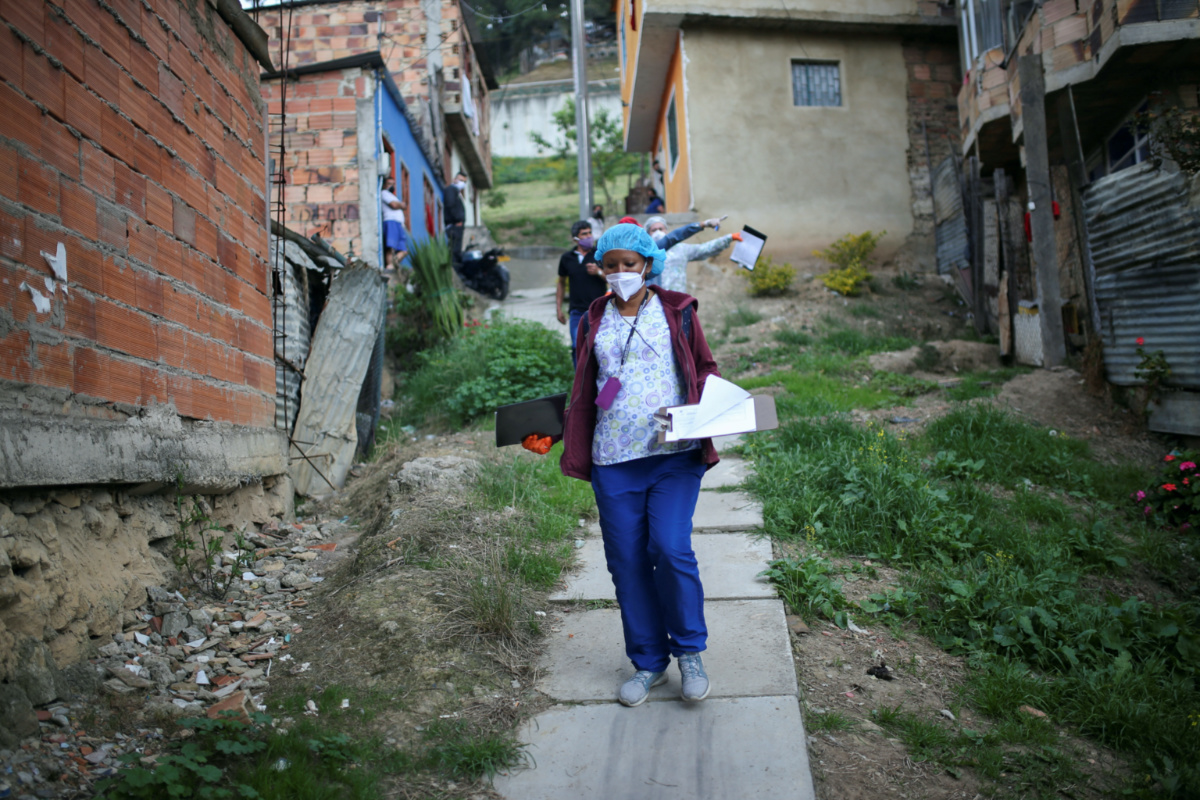Bogota, Colombia
Reuters
More than 15 million Colombians suffer moderate or severe food insecurity, equivalent to almost a third of the population, due to poverty, unemployment and the Andean country’s long-running conflict, the UN World Food Programme said on Thursday.
The WFP carried out investigations in Colombia between June and November last year, finding that 13.4 million people face moderate food insecurity, while 2.1 million face severe food insecurity.

Mayoral employees walk through a poor neighbourhood during a day of food aid delivery, amid the outbreak of the coronavirus disease (COVID-19) in Bogota, Colombia, on 21st April, 2020. PICTUR: Reuters/Luisa Gonzalez
Food insecurity refers to insufficient access to food and nutrition on a temporary, acute, seasonal or chronic level, affecting people’s health, especially children, the WFP said.
“Factors such as the COVID-19 pandemic, job losses, difficulties in accessing land, rising food prices, disasters caused by climate change and more recently supply shortages due to the crisis in Ukraine have pushed households to a high level of economic vulnerability,” the WFP said in a statement.
Colombia’s coastal Pacific and Caribbean regions saw food insecurity rise above 40 per cent, higher than the national average, with the provinces of Sucre and Cordoba showing food insecurity of 63 per cent and 70 per cent respectively, the WFP said.
At the same time, food insecurity affected a greater number of people in urban centers, with 1.5 million people at risk in the capital Bogota alone, according to the report.
A major contributing factor to food insecurity is Colombia’s internal armed conflict, the WFP added. The conflict has raged for almost six decades, leaving hundreds of thousands dead and millions displaced.
“Half of the households that have been victims of the armed conflict suffer from food insecurity, compared to households that haven’t been victims, where food insecurity is 28 per cent,” the report said.
In particular, households led by women, as well as Afro-Colombian or indigenous households, and where the main breadwinner is informally employed are the most vulnerable to food insecurity, the WFP said.






